Ornatus: types and content
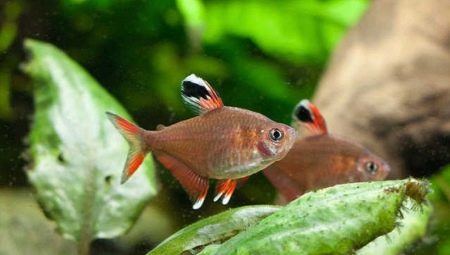
Ornatus is a popular aquarium fish with a very modest size, impressive appearance and a variety of color options for scales. She is chosen for her unpretentiousness, simplicity of content, the ability to decorate her home underwater world with her presence. The ornatus of the species pink tetra, white-finned and red, black phantom and common has been inhabiting aquariums all over the world for almost 90 years. Keeping and breeding these fish is an exciting experience for both a beginner and an experienced person. What the future owner of ornatus needs to know, and what points should be taken into account when preparing an aquarium, we will consider later in the article.
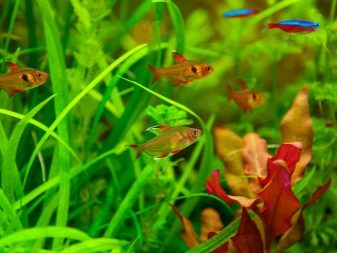
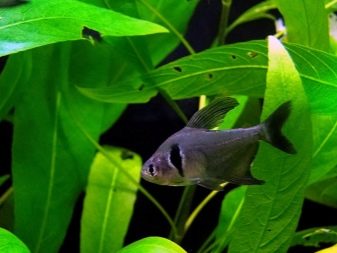
Description
Ornatus fish is an exotic representative of the underwater world that lives in French Guiana and the Amazon. It belongs to the haracin family, prefers to settle in freshwater bodies of water and not too fast rivers. Aquarium fish, which received the second name phantom, gained their popularity thanks to European enthusiasts, who in 1933 began active artificial breeding of exotic ornatus.
Aquarium phantoms have a compact narrow body 4-6 cm long; larger specimens are found in nature. In captivity, fish live for about 5 years. Among the characteristic common features of all ornatus are:
- body flattened in the lateral parts;
- widening in the middle from the fin to the abdomen;
- dorsal process, high set, narrow;
- the pelvic and anal fins are brightly colored;
- the tail has a two-lobed shape, small size, wide.
Due to the variety of types and colors, descriptions of ornatus should be considered, taking into account the characteristics of a particular species. In this case, it will be possible to get a more accurate and complete picture of the characteristics of pets, their individual traits. Among some features of ornatus, entry into puberty at the age of 6-8 months can be noted. Up to this point, it can be quite difficult to separate the male from the female.
In adult fish, sex differences are more pronounced. Males acquire a longer dorsal fin; females develop a reddish coloration on the surface of these processes.
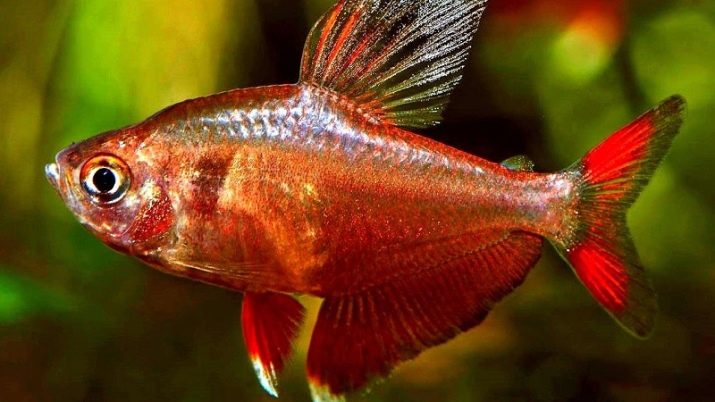
Varieties
All existing species of ornatus fish can be divided into several subtypes according to their individual characteristics.
- Ordinary. Has a bronze body color with a characteristic pearl tint, the tail is crowned with two points of scarlet color, the same shade is present on the chest. The fin surfaces are the same shade as the body or a pronounced red color. In the region of the dorsal process, there is a contrasting white spot with a black dot. Snow-white edging is also acceptable for the tips of the fins.
- White-finned Ornatus. The most rare species. It is similar to a phantom, only it has a more transparent fin structure, and all black spots are replaced by white ones.
- Ornatus is red. An aquarium fish with a head of a rich ruby tone and a slightly lighter body, a contrastingly colored tail, black, with a silver or white border. Males have a charcoal spot on the dorsal fin. Behind the branchial part of the head, the body has a golden pink hue with a black spot in the center. The brightly colored red ornatus are much more sensitive to the parameters of the aquatic environment than their counterparts.
- Black phantom. The most popular color among aquarists implies that the fish has a silvery-gray body with an almost transparent structure, a rich black tail. The fins are painted in the same tone, the dorsal is distinguished by splendor, high, giving the ornatus majesty. The gills are reddish.
- Pink tetra. Another rare species. Externally similar to the common ornatus, but lighter colored, and with a pinkish tint. Has matching fins with red markings on the surface.
- Red dot or rubrostigma. A fish with a light silvery body, almost transparent, inside the spine of a reddish hue is noticeable. The branchial region and the base of the caudal fin have the same coloration. On the sides in the central part there is one pink spot with clear outlines.
Some fish of the cichlid family also have the prefix "ornatus" in their name, but have no direct relation to the tiny inhabitants of the Amazon. Do not confuse them, since the sizes, nature and habits of individuals are radically different.
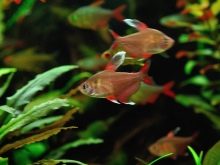
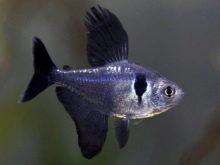
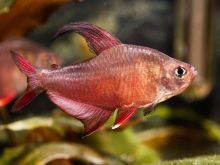
Compatibility
Ornatus are representatives of the underwater world, distinguished by their peacefulness. They can be kept in the same tank with fellows with similar parameters. These fish get along well with viviparous - swordtails, guppies, platies. Ornatus can be planted with the carp family - barbs, cardinals, zebrafish, goldfish. The neighborhood will be harmonious with any aquarium catfish - synodontis, speckled, ancistrus.
The aquarium looks beautiful, where different representatives of the haracin family live together (the ornatuses themselves belong to it). Compatible breeds include neons, thorns, and minors. They get along well with labyrinth fish - cockerels, gouras, macropods, lalius.
However, in no case should cichlids and ornatus be kept together - for the latter, this can result in death.
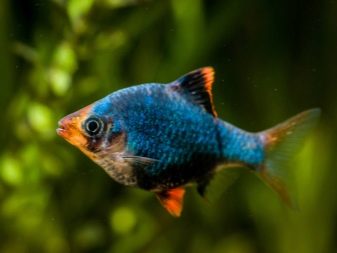
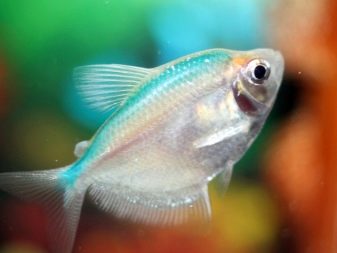
Growing conditions
To provide ornatus with decent living conditions, aquarists need to prepare a container in advance for settling them. A number of necessary components can be distinguished.
- Aquarium. A tank with a capacity of 60 liters or more (approximately 10 liters per bird) is suitable.Fish prefer to live in schools, one by one they experience severe stress, they may die. In addition, a small number of ornatus will be simply invisible in the space of a large aquarium.
- Filter. It will provide sufficient purity of the aquatic environment, but will not form too violent and fast flow. You can use flutes as a “splitter” of jets.
- Thermostat. The optimum temperature for growing and keeping fish is in the range of +23.28 degrees Celsius.
- Priming. The most rational choice would be quartz sand. Light and clean soil will maintain an optimal microbiological environment. Against the background of a dark base - volcanic black sand - the color of the fish looks much brighter.
- Plants. Dense, small-leaved aquatic plants should be planted in the ornatus aquarium. Place them along the back wall, leaving enough free space for swimming. Bright light is not very useful for ornatus, placing floating plants in the aquarium - duckweed, Riccia, will help provide shading.
Ornatus care includes the stable maintenance of the set water temperature. Fish are not too sensitive to acidity - they are suitable for a neutral or acidic environment, water hardness should be between 3 and 12 dGH. Substitutions in the amount of up to 25% are carried out no more than twice a week, while maintaining a single temperature. It is recommended to supplement the aquarium itself with a lid, since playful pets can easily jump out of the tank.
Ornatus should have shelters inside the tank, allowing them to rest or take shelter from dangers. Snags, stones, algae will do. It will be useful to form a dry leafy cover on the ground, periodically replaced with new litter. Ornatusians benefit from creating an authentic environment - for this, peat extract is added to the water.
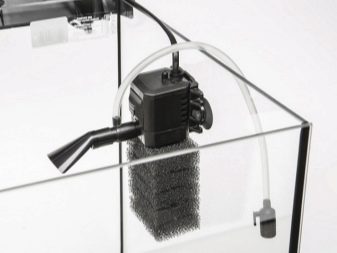
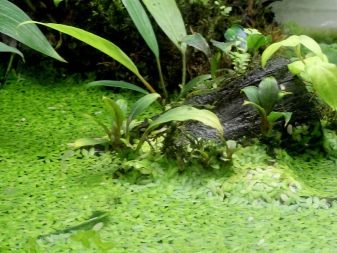
Feeding rules
Ornatus fish are relatively unpretentious in their choice of food. They are given live food - from bloodworms to daphnia, especially increasing their portions in the period preceding spawning. Phantoms are able to eat ready-made dry food, food additives, fortified mixtures help to diversify the diet. Any food, taking into account the characteristics and size of the fish, must be pre-chopped.
Ornatus also need plant food. This capacity is usually scalded with boiling water, finely chopped plates of lettuce. Spinach, dandelion, duckweed, and pinnate are useful for fish. The share of green food in the diet is calculated individually, but in the amount of at least 30%. In general, food should be fairly varied.
The frequency and frequency of feeding adult fish is 3-4 times a day, fry can receive food even more often. Portions are given in small, controlling the purity of the water in the aquarium. Ornatus feed on the surface of the water.
The food settled on the ground can be eaten by other fish - catfish and other bottom inhabitants. If they are absent, it is very important to remove food leftovers in a timely manner.
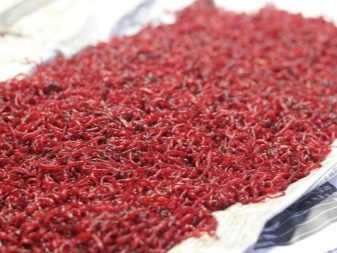
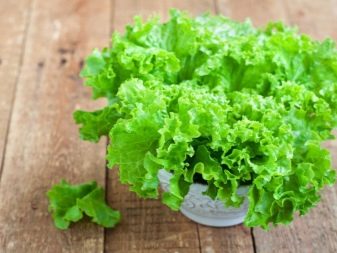
Reproduction
It is recommended to breed ornatus fish using a special spawning aquarium. This tank must have a capacity of 30 liters, a water level up to 17 cm, a stable temperature regime within +26.28 degrees Celsius. The acidity of the medium is close to neutral - about 5.5-6.5 pH.
A spawning aquarium does not require artificial lighting; natural lighting is eliminated by using an opaque, breathable cover material. Javanese moss is used inside, the bottom is lined with mesh. Equally different-sex individuals are transferred to the spawning aquarium. Two weeks before the expected start of the breeding season, the fish are transferred to live food rich in protein. With the right approach, spawning will begin within 24 hours after transplanting.
Netting and Javanese moss are the best places for ornatus masonry to form. At the end of the process, the fish are transferred to a regular aquarium, transferred to their usual diet. After hatching, the fry receive ciliates, "live dust" as food, from the second week, starting ready-made feeds can be given. The reared young are gradually transferred to adult food, deposited in a common aquarium.
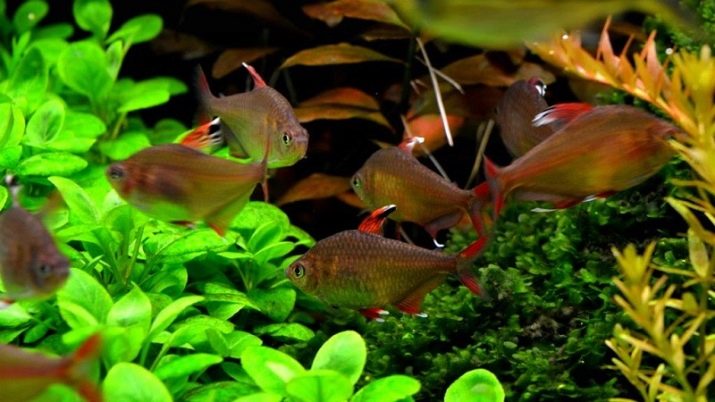
For information on how to properly care for ornate, see the next video.








